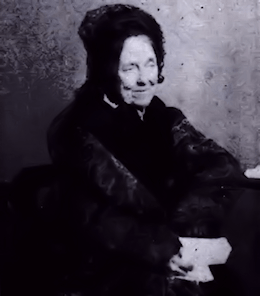Textus Receptus Bibles
Julia E. Smith Translation 1876
| 141:1 | Chanting to David. O Jehovah, I called to thee; hasten to me; give ear to my voice in my calling to thee. |
| 141:2 | My prayer shall be prepared incense before thee; the lifting up my hands the gift of the evening. |
| 141:3 | Set, O Jehovah, a watch to my mouth; guard over the door of my lips. |
| 141:4 | Thou wilt not incline my heart to an evil word, to work works in injustice with men doing iniquity: and I will not eat upon their dainties. |
| 141:5 | The just one shall smite me; a mercy: and he shall admonish me, an oil of the head it shall not decorate my head: for yet my prayer in their evils. |
| 141:6 | Their judges were cast down against the hands of the rock, and they heard my words, for they were sweet. |
| 141:7 | As he cutting up and cleaving asunder in the earth, our bones were scattered at the mouth of hades. |
| 141:8 | For to thee, O Jehovah my Lord, are mine eyes: in thee I put my trust; thou wilt not make my soul naked. |
| 141:9 | Watch me from the hands of the snare they will lay for me, and the snares of those working iniquity. |
| 141:10 | The unjust shall fall into their nets together, till I shall pass by. |

Julia E. Smith Translation 1876
The Julia Evelina Smith Parker Translation is considered the first complete translation of the Bible into English by a woman. The Bible was titled The Holy Bible: Containing the Old and New Testaments; Translated Literally from the Original Tongues, and was published in 1876.
Julia Smith, of Glastonbury, Connecticut had a working knowledge of Latin, Greek and Hebrew. Her father had been a Congregationalist minister before he became a lawyer. Having read the Bible in its original languages, she set about creating her own translation, which she completed in 1855, after a number of drafts. The work is a strictly literal rendering, always translating a Greek or Hebrew word with the same word wherever possible. Smith accomplished this work on her own in the span of eight years (1847 to 1855). She had sought out no help in the venture, even writing, "I do not see that anybody can know more about it than I do." Smith's insistence on complete literalness, plus an effort to translate each original word with the same English word, combined with an odd notion of Hebrew tenses (often translating the Hebrew imperfect tense with the English future) results in a translation that is mechanical and often nonsensical. However, such a translation if overly literal might be valuable to consult in checking the meaning of some individual verse. One notable feature of this translation was the prominent use of the Divine Name, Jehovah, throughout the Old Testament of this Bible version.
In 1876, at 84 years of age some 21 years after completing her work, she finally sought publication. The publication costs ($4,000) were personally funded by Julia and her sister Abby Smith. The 1,000 copies printed were offered for $2.50 each, but her household auction in 1884 sold about 50 remaining copies.
The translation fell into obscurity as it was for the most part too literal and lacked any flow. For example, Jer. 22:23 was given as follows: "Thou dwelling in Lebanon, building as nest in the cedars, how being compassionated in pangs coming to thee the pain as in her bringing forth." However, the translation was the only Contemporary English translation out of the original languages available to English readers until the publication of The British Revised Version in 1881-1894.(The New testament was published in 1881, the Old in 1884, and the Apocrypha in 1894.) This makes it an invaluable Bible for its period.